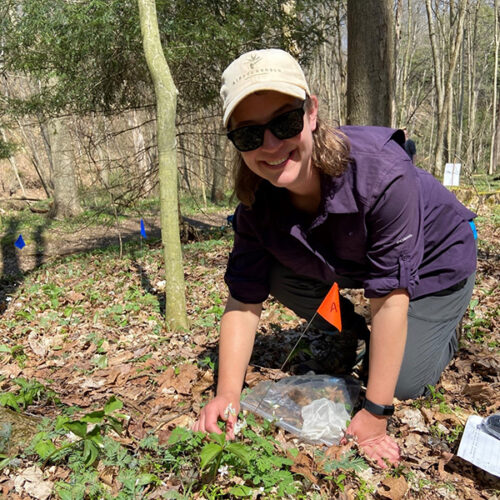Degrees
- Ph.D., Biological Sciences, University of Illinois at Chicago/Chicago Botanic Garden, 2010
- B.A., Biology, St. Olaf College, 2003
Ison lab members have research interests in plant ecology, conservation biology, and ecological genetics. We study how anthropogenic (i.e., human-induced) alterations to natural areas are impacting native plant and bee populations. In North America, nearly all of our natural areas have been fragmented, and many populations are small and isolated. In fact, less than 1% of the pre-colonization prairie remains. The fragmentation and loss of habitats mean that the remaining native plant populations are often subject to the ecological and genetic consequences of small population sizes. Our research examines how flowering time, plant density, and pollinator species affect population persistence across a fragmented landscape. Please visit the lab’s webpage to learn more about our research and for information on joining the lab.
- BIOL 202 Gateway to Ecology, Evolution, and Organismal Biology
- BIOL 340 Field Botany
- BIOL 350 Population and Community Ecology
- BIOL 356 Conservation Biology
- BIOL 399 Plant-Insect Interactions
- Pearson AE*, Z Zelman*, LA Hill*, MA Stevens*, EX Jackson*, MMN Incarnato*, RM Johnson*, S Wagenius, JL Ison. 2023. Pollinators differ in their contribution to the male fitness of a self-incompatible composite. American Journal of Botany. 110(6): e16190. Part of a Special Issue: Pollen as the Link Between Phenotype and Fitness
- Reed, W*, JL Ison, A Waananen, FH Shaw, S Wagenius, and RG Shaw. 2022. Genetic variation in reproductive timing in a long-lived herbaceous plant. 2022.American Journal of Botany. 109(11):1861-1874. Part of a Special Issue: Approaches to the Study of Quantitative Fitness-Related Traits
- Page, ML*, JL Ison (co-first authors), A Bewley*, K Koch*, A Kaul*, K Kolis*, K Holsinger*, and S Wagenius. 2019. Pollinator effectiveness in a composite: a specialist bee pollinates more florets but does not move pollen farther than other pollinators. American Journal of Botany. 106(11): 1487–1498.
- Ison, JL, ESL Tuan* (co-first authors), MH Koski, JS Whalen*, and LF Galloway. 2019. The role of pollinator preference in the maintenance of pollen colour variation. Annals of Botany. 123(6) 951-960
- Ison, JL, LJ Prescott* (co-first authors), SW Nordstrom, A Waananen, and S Wagenius. 2018. Pollinator-mediated mechanisms for increased reproductive success in early-flowering plants. Oikos. 127(11): 1657-1669.
*Research conducted when author was an undergraduate researcher.
- Assistant Professor of Biology, The College of Wooster, 2015-present
- Visiting Assistant Professor of Biology, Wabash College and Wittenberg University, 2013-2015
- Postdoctoral Fellow, University of Toronto, 2010-2013

